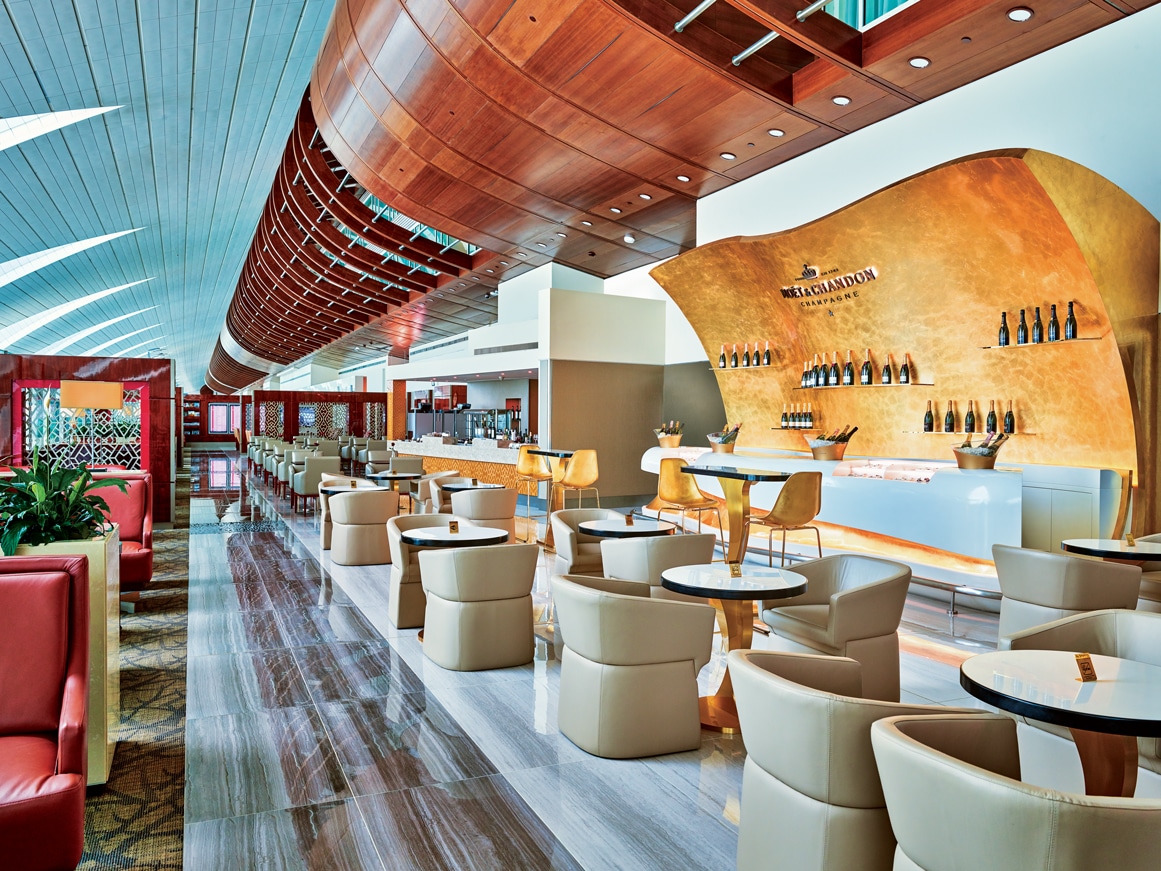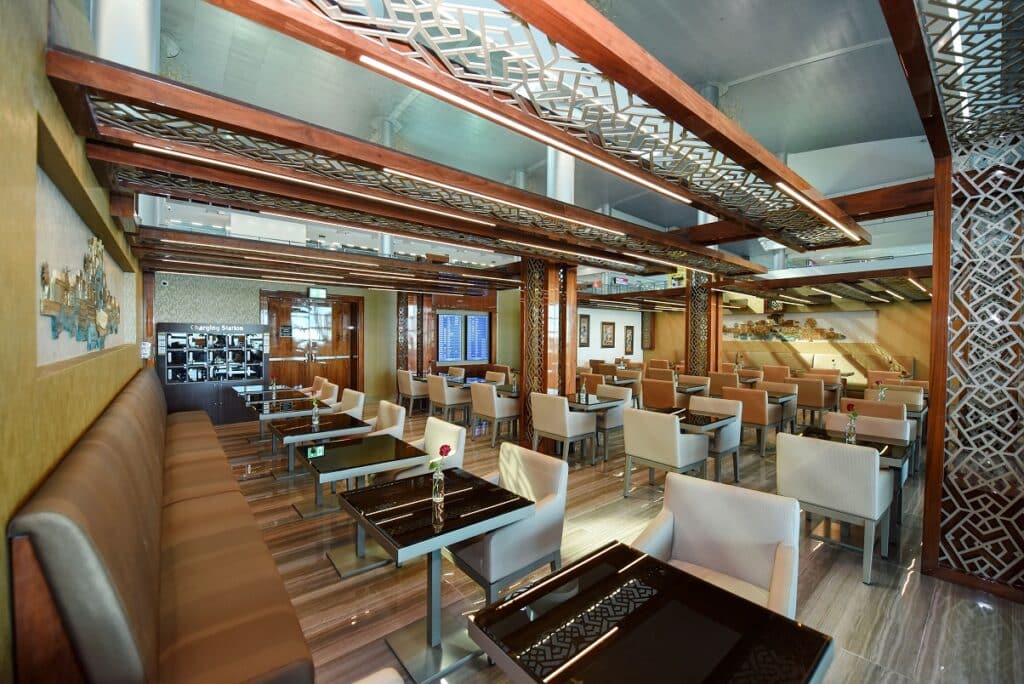Airlines
More than 30 Emirates Lounges now open worldwide

As more than 30 Emirates Lounges around the world have resumed full service, premium travellers can look forward to an exceptionally comfortable travel experience during the upcoming peak travel season with the re-opening of the Emirates Lounge in Concourse C, Dubai International Airport. This lounge is the 7th Dubai lounge to reopen after the pandemic.
Located in Concourse C, adjacent to Gates C09, the newly re-opened Emirates Lounge is a 1308 square metre and 265- seat dedicated space for rest, relaxation, and refreshment before travel. First and Business Class customers can access the lounge on a complimentary basis, as well as Silver, Gold and Platinum Skywards members. Premium Economy and Economy passengers can enjoy paid access at $150 exclusive of taxes, or just $125 for Emirates Skywards members. Currently open 24/7 to service the high demand of festive season, passengers can relax in the lounges for up to 4 hours before a flight.
Japan Airlines Set To Fly Airbus A321P2F In Spring 2024(Opens in a new browser tab)
With elegant design and décor including Italian marble floors, leather sofas, water features and eye-catching Rolex clocks – Emirates Lounges are purpose built for comfort with multiple chaise longue,’ pillows and blankets, complimentary premium wines, spirits, champagne, and dedicated dining areas with gourmet cuisine designed by award-winning chefs.
To renew and refresh, there are dedicated shower spas with bathrooms and baby changing facilities, TVs dotted around the lounge, complimentary Wi-Fi throughout, PCs and printers, and an area to charge devices. A fully equipped business centre is also available, including meeting rooms with projectors and individual touch screen workstations.
Emirates has a vast network of 39 dedicated airport lounges, including 7 in Dubai and 32 located within major airports around the globe, all designed with the same attention to detail and exceptional service. At Dubai International Airport, 7 Emirates Lounges are located in the flagship Terminal 3, – 3 for First Class and 3 for Business Class customers, as well as the Emirates’ Lounge catering to all premium customers. Emirates also operates lounges in key cities across the network – Auckland, Bangkok, Birmingham, Boston, Cairo, Cape Town, Colombo, Dusseldorf, Frankfurt, Glasgow, Hamburg, London Gatwick, London Heathrow, Los Angeles, Manchester, Melbourne, Milan, Munich, New York, Paris, Perth, Rome, San Francisco, Singapore, and Sydney.
Emirates Lounges in Dubai include distinctive features like the Moët & Chandon Champagne Lounge in the Business Class Lounge in Concourse B, where iconic cuvée’s are matched with mouth-watering canapés, created by Michelin-starred chefs. In the First-Class Lounge in Concourse A, there is a Le Clos fine wine and luxury spirits boutique, where sommeliers are on hand to recommend a fine vintage to suit all tastes, and passengers may purchase favourite onboard wines in the Le Clos stores – outside the lounges on Concourses A and B.
There is also a Cigar Bar – a separate smoking area within the Concourse A lounges, with comfortable leather armchairs and a cigar menu. Passengers can also enjoy new concepts such as the Barista Experience by Costa Coffee and get energised at the Health Hub – providing a wide array of nutritious snacks and fresh juices for passengers looking to enhance their wellness, in the lounges in Concourse B. For some pre-travel pampering, the serene Timeless Spas are situated in lounges in Concourse A and B, inviting passengers to choose from a signature menu of treatments and beauty therapies.

Airlines
Air India Rolls Out A350s for Delhi-New York JFK and Newark Routes

In a major development for North American travelers, Air India has announced the deployment of its state-of-the-art Airbus A350-900 aircraft on two key routes: Delhi to New York and Delhi to Newark.
The service on the Delhi-New York route will commence on November 1, 2024, while the Delhi-Newark route will see its inaugural flight on January 2, 2025.
The introduction of the air india a350 will bring significant enhancements to Air India’s offerings, particularly with the launch of its Premium Economy class. air india retrofit This new class will feature 24 wide seats arranged in a 2-4-2 configuration, providing passengers with extra legroom and a more comfortable flying experience.
Soon, Air India aircraft will feature onboard WiFi & all-new cabins: Click here
“We are encouraged by the positive guest feedback we have received from the domestic deployment of our air india a350 interior to offer our hero product on the Delhi-New York JFK and Delhi-Newark routes. This is a significant leap forward for our U.S. operations that also underscores our commitment to continuous improvement,” said Campbell Wilson, Chief Executive Officer & Managing Director of Air India.
The A350’s Business class will set new standards with 28 private suites, each equipped with full-flat beds, direct aisle access, and personal wardrobes. Economy class will be configured to accommodate 264 passengers in a 3-4-3 layout. Across all cabins, passengers will enjoy the latest Panasonic eX3 in-flight entertainment system, offering over 2,200 hours of content.
Air India’s First A350-900: Interior, Routes, &Inflight Features: Click here
This strategic deployment marks a notable enhancement in Air India’s U.S. operations, with 60% of its flights to the U.S. now featuring new or upgraded cabin interiors. The air india new international routes currently operates 51 weekly flights to five U.S. destinations: New York JFK, Newark, Washington DC, Chicago, and San Francisco.
The revamped cabins, advanced in-flight entertainment systems, and improved service standards represent air india wifi commitment to providing a superior travel experience. “We believe this enhanced offering will solidify Air India’s position as a leading carrier and attract travellers seeking a world-class flying experience between India and the United States,” the airline stated.
Seats on these flights are now available for booking on Air India’s website, mobile app, and through travel agents, ensuring that passengers can easily plan their journeys on these newly upgraded routes.
Air India Economy vs Qatar airways economy: which is best?:Click here
-

 Travel1 week ago
Travel1 week agoAir India to Expand US Operations with Three New Routes After a Decade
-

 Travel2 weeks ago
Travel2 weeks agoWhy We Should Avoid These Stamps in a Passport
-

 Airlines1 month ago
Airlines1 month agoInvestigations Reveal Fake Chinese Titanium in Boeing and Airbus Jets
-

 Tech4 weeks ago
Tech4 weeks agoChina’s CATL Plans 1,800-Mile Electric Plane Launch by 2027
-

 Airport3 days ago
Airport3 days agoTop 10 Largest Airports in the World by Size
-

 Aerospace4 weeks ago
Aerospace4 weeks agoChina’s Fighter Jets Turn Wings into Autonomous Drones
-

 Airlines4 days ago
Airlines4 days agoAir India Rolls Out A350s for Delhi-New York JFK and Newark Routes
-

 Defence3 weeks ago
Defence3 weeks agoBoeing Enhances Chinook with New Engines and Block II Upgrades at $96 Million









